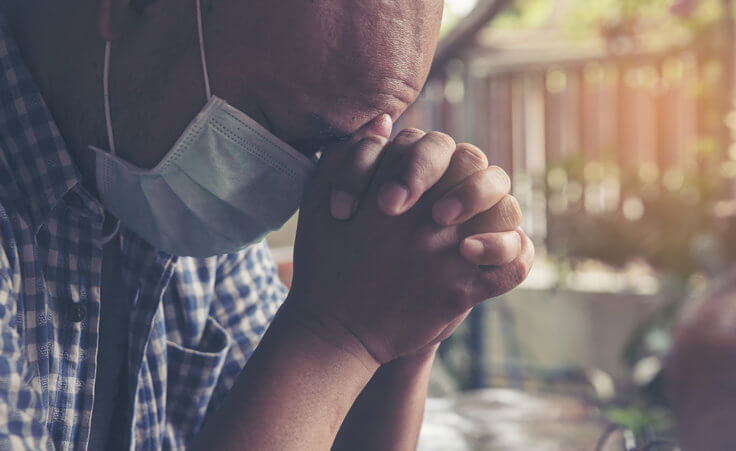
© PheelingsMedia /stock.adobe.com
Why are teens sadder, lonelier, and more depressed than ever before? Is this just an illusion of our sensitive media, or is there really a mental health crisis in America?
The US and CDC surveyed 8,000 teen students in America. According to this large study, “Persistent feelings of sadness or hopelessness” nearly doubled from 2009 to 2021 with an increase of 26 percent to 44 percent. This level of sadness in teens is undeniable, and it’s the highest level ever recorded.
If you’re a parent, leader, or teen and want to get a grip on why America is slipping into despondency, you’ll need to avoid some tempting explanations to get at the root of what’s happening.
The teen mental health crisis is a complex issue that deals in multiple areas, but The Atlantic writer Derek Thompson sees four main answers to why it’s an expanding problem.
Mistaken answers
Thompson outlines several fallacies, which are easy answers but not supported by evidence.
- “Teens are behaving badly.” Yet teens are mostly behaving “better, not worse.” For instance, drunken driving among teens is down significantly.
- “Teens seem sadder in studies because they are open to talking about it.” However, objective measures of anxiety and depression are up in addition to self-reported sadness.
- “Teens are sad only because of the pandemic.” While this did make things worse, it’s not a new trend. Sadness has been increasing since before the isolating lockdowns.
If these don’t answer why teens are more depressed, lonely, and sad, what does?
Four reasons for increasing persistent sadness
Some of these factors you could probably have guessed. Yet, despite what seems like common knowledge, many parents still feel at a loss for why sadness is skyrocketing among teens. The following reasons may challenge them to parent differently or to reconsider their fears.
Social media and smartphone use
You probably already knew this would make the list.
Social media has repeatedly been shown to increase body image issues, especially for young women in their teens, and many generally feel worse about themselves because of it. The constant need to stay up-to-date on social media drives up anxiety and increases social pressure, which is already high in formative teen years.
Social media is arguably not bad in and of itself. According to Thompson, it’s a bit like alcohol. Alcohol is devastatingly addictive for a certain percentage of people, but most can handle it without problems. Many teens can handle the extra pressure of social media, but some have their lives ruined by it, and that’s no exaggeration.
Young students who are cyberbullied are twice as likely to attempt suicide. Some families are even suing social media companies for their addictive practices that led to the suicide of their children. Since the explosion of social media and smartphones in the early 2010s, “loneliness, depression and self-harm among teens sharply increased in the United States, Canada and the United Kingdom,” and it was correlated entirely with smartphone and internet use.
It seems that around half of teens would prefer a world without social media but feel trapped because they would be socially outcast without it.
Sociality is down
This connects to the previous issue. While social media is not bad in small doses, most US teens spend over four hours a day on social media apps. Average teens in the US use screens seven hours a day, not including at school.
As one expert said, “I tell parents all the time that if Instagram is merely displacing TV, I’m not concerned about it.” But studies show teens are less likely to go out with their friends, get their driver’s license, or play sports now than ever before. And, teens are getting much less sleep.
So, if social media is replacing real social interaction, sleep, or other beneficial activities, it’s bad—and it does for the overwhelming majority of teens today.
The world is stressful—and there’s more news about the world’s stressors
While I’ve written about why the world isn’t as bad as it seems and the “bad news bias,” there are significant stressors in the world that face teens. Their concerns include finances, climate change, the pandemic, political stability, etc., and they all weigh down on many modern teens—probably more than they should.
The fourth cause of rising sadness in teens may come from another source: misguided parenting.
Modern parenting
There are a couple of interesting findings here that may step on some readers’ toes, but they’re vitally important to mention. I’m speaking directly to parents of teens now, again pulling from The Atlantic article:
“Rug-rat race”
There is the upper-class phenomenon called the “rug-rat race.” This term refers to the well-meaning tendency of some parents to put increased pressure on teens in competition for the best universities. It can also include enrolling them in every sport imaginable. In other words, this lifestyle forces a fast-paced, high-pressure life on them. This rat-race mentality seems to increase anxiety.
“Accommodative parenting”
An increase in “accommodative” parenting is ironically leading to higher anxiety as well. An example of this kind of parenting is if a child is afraid of dogs, their parents keep her from any interaction with them. The problem with this accommodation is that these children never learn how to healthily release negative emotions and won’t learn how to face the challenges of life.
Stressful, even dangerous things will happen in their lives. Are you preparing them for those challenges or trying to cut them off? Of course, this happens in stages with different ages. But, by the time kids are teenagers, they need to have learned to face hardship of some kind.
As Thomspon suggests, “If the girl is afraid of dogs, encourage her to play with young puppies.” While this phrase may turn some readers off, “helicopter” parents are a real problem. It is vital to make children do hard things and face fears and stressors, giving them a safe-ish environment to experience those stressors.
Parental neglect in the digital age
Studies and several documentaries aptly show that modern parents are far too free with internet access and social media use and far too overprotective in the real world. This leads to a lack of coping skills and numerous other consequences, among which are higher rates of sadness, loneliness, and depression.
Gone are the days when childhood meant playing outside, tumbling in the woods, going on adventures, and the classic parent’s statement, “Be back before dark.” These formative years of play and social interaction with others help kids and teens develop key skills. Social media does not replace real-world relationships.
Now, many parents feel a crisis coming on if their children aren’t being tracked at all times or checking in every hour on their smartphones. Only you know your child, and some require more supervision than others, but this overprotective parenting normally harms, not helps, children.
At the same time, middle schoolers and younger children are given unrestricted access to the web. You might ignore this part of parenting because you “can’t keep up” with the tech. I cannot overstate how disastrous to their well-being this is.
The far greatest risk to children is online. This includes sexual predators. In one study, 40 percent of middle school students said they would accept friend requests from strangers online. According to the F.B.I., “An estimated 89 percent of sexual advances directed at children occur in Internet chatrooms or through instant messaging.”
In the real world, kidnappings of children make headlines but they are actually extremely rare. The undeniable fact is that the US is far, far safer than it was in the ’90s even though people falsely believe it’s getting worse. Child predators now primarily groom children through the internet rather than in the real world.
This is nothing to say about pornography, which exists on essentially all platforms. As Fight the New Drug aptly says, “If 60% of 10 and 11-year-olds have smartphones, is it really all that surprising that, sometimes, they encounter porn online whether they’re looking for it or not?” According to one study, the average age of a child’s first exposure to porn is thirteen.
As Terra Mattson writes for Christian Parenting, “The real digital dilemma: Our children need us to lead.”
How to start leading
Parents must train children for the digital age. You cannot remove them from the internet completely (depending on their age) because their friends are on it. So, focus on preparing them to handle the internet well, and put wise limits on their access according to their age.
Don’t panic if you’ve felt like you’re behind the tech. Start now and start somewhere. There are levels, and only you know your child best. But some helpful places to start include:
- Watch Social Media Dangers Documentary — Childhood 2.0. While the Netflix documentary The Social Dilemma also covers this material, the first one is free on YouTube and addresses parents more specifically.
- For a broad, Christ-centered overview, read “Eight social media tips for families” by Terra Mattson.
- For a more in-depth guide, read “Childhood 2.0: A handbook for raising kids in the digital age.” Note that this resource is secular, so filter it through a biblical lens.
Help children find their identity in Christ
The best thing parents can do for their children is to teach them how to find their identity in Christ, preparing them to make their own biblically informed decisions.
- Parents can equip their children to face the challenges of messing up by showing them Christ’s grace (Hebrews 4:16).
- Parents can equip their children to face social media and popularity contests by showing them how Christ is our true identity (Romans 8:1; Ephesians 4:24). Parents can also model and show them to look for Christ’s love rather than other people’s approval (Galatians 1:10; Psalm 118:8).
- Parents can equip their children by disciplining them with controlled, loving punishments (Proverbs 13:24).
- Parents can equip their children to make real friends by teaching them to love and be intentional while avoiding gossip (Proverbs 17:17; 16:28).
Although the world is changing around us at a break-neck pace, and it feels like teens are living in a digital social experiment, we can take comfort in knowing our God never changes.
For more guidance, visit Christianparenting.org.












